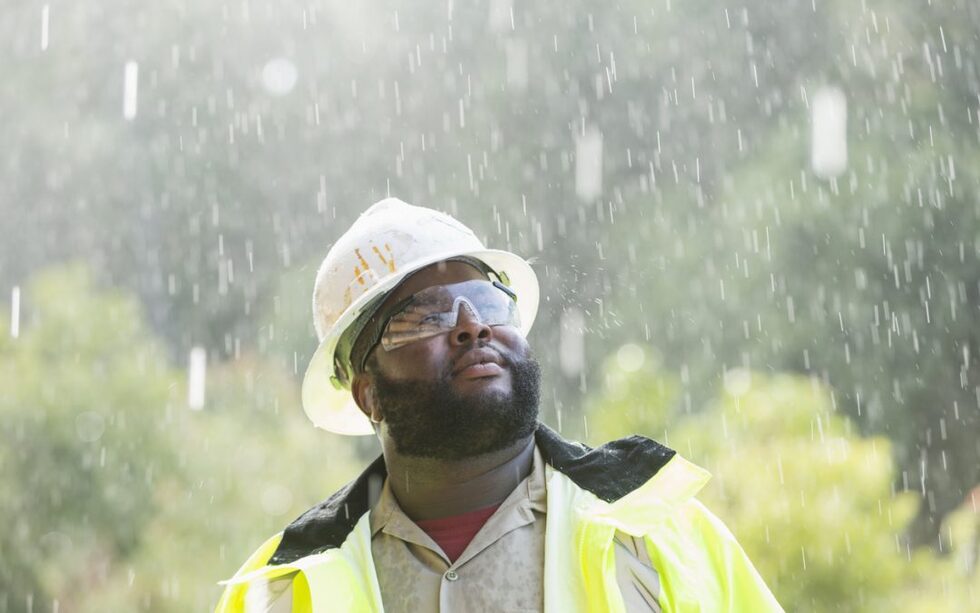


Posted June 22, 2020

A Question was raised from industry- What advantage/disadvantage does moisture have on Arc Rated workwear and how does Arc Rated Wet Weather gear help?
Wet/Moisture/Rain, sometimes people are talking sweat and moisture or rain, so hopefully we are covering both for you.
Moisture/Sweat and Layering:
The below weblink has information about heavier/higher arc rated garments, and the ‘pros and cons’ regarding comfort and body moisture. Whilst a heavier garment may give better arc protection, the additional sweat/heat stress from wearing heavier items may have a negative effect. E.g. sweat in an arc flash incident can cause steam burns.
The ideal solution is a layering system so that garments can be layered depending on the climatic conditions and or physical nature of the tasks being carried out. It is best to wear layers that wick away moisture from the skin to avoid this, as with the ArcTech® arc rated merino garments that you currently use. Whilst natural fibres are the way to go in comparison with fibres that would shrink and melt in and arc flash, cottons do hold moisture rather than wick away moisture, but do not increase ignition.
So heat stress and moisture have been an issue, that is why we have worked on design on our overalls and two piece garments to reduce heat stress and lowering the weight of the fabric and garment components whilst retaining durability and combination tests on layering for higher protection levels when required. Layer up is the best option.
Rain and Arc Rated Wet Weather Garments:
The other aspect that has always been spoken about over the years and I have heard it said , “we don’t work in the rain “ but that doesn’t ring true, because who is out in all weather fixing downed power lines? You guys - the utility companies.
The trouble with the old style wet weather gear that was originally formulated in the USA was that it was a PU, “rubbery material” which was heavy and did not breath. It was heavy and uncomfortable for people to wear. It also caused an excess of body moisture in the under-layers, because it was not breathable. These PU garments were only used by a small number of companies in NZ, because of the above. A lot of companies were happy to use the Fire Retardant Anti-Static Breathable Wet Weather garments, because they were more comfortable for people to wear. We worked hard to develop a fabric that would be waterproof, breathable, and also achieve an arc-rating, which is what we are using for our arc-rated WW gear. We have been supplying WW garments in this fabric for the past 5 years.
You will see in the article attached that even different coloured fabrics can affect the arc ratings either as dry or wet. All the tests in the article range from 100% saturation (double the fabric weight) to moisture only, after fabric has been wrung dry and tested to simulate saturated sweat.
Ultimately any environmental change such as humidity, moisture (rain) will affect the arc rating of fabrics.; For example, if there is more moisture in the atmosphere on the morning of testing in comparison with the afternoon when the temperature has increased this will affect the test results.
We use Kinectrics in Canada to do our testing they test 20 + samples to get an average cal rating. The test rig is calibrated on a regular basis.
You can see in the attached report different fabrics have different outcomes and what degree of moisture saturation you have. Page 6 of the article is about the breathable arc rated wet weather gear and why it should be used to mitigate any potential unknown reduction in protection due to moisture/ environment.
The other important factor is that Only Arcpro ® has an Arc rated 3 layer breathable laminate in this marketplace, after testing in user trials with contractors for an 8 year period. “Best Wet Weather Gear Ever” it is being called, designed by your industry for your industry .